OneSight’s mobile eye care clinic in the Brazilian Amazon is proof that even when you bring the clinic to the villages, eye care is not as accessible as you’d think.
39-year-old Alex the ice cream man traveled a long way to get to Cuia.
You’d never guess that, though. His dusty maroon bicycle and battered blue icebox with PICOLÉ, popsicle, painted on it in crude letters are modest.

Alex the ice cream man
Initially, I figured he was an enterprising local coming to make a couple extra bucks off of the patients of OneSight’s eye care clinic in Cuia village.
Then I noticed the plastic roll glasses on his face, the prescription paper crumpled in his hands.
Rather than coming to profit off of the crowd, Alex came to Cuia specifically for the clinic; making a small profit was an added bonus. Not that he makes much, mind you; he sold about 50 popsicles a day for 1 real (USD$0.27) apiece.
He heard about the clinic from his friend the tushawa, local leader, of Cuia. Given his increasingly blurry vision, he decided it would behoove him to attend the clinic.
On his ice cream bike, of course.
But Alex is not from Cuia; getting to the clinic was not so easy. He first went to the previous day’s clinic in Murutinga. Unfortunately for him, there were too many patients in line before him. He was hungry but brought no food, and he could not afford the food sold to people waiting their turn; he had to turn around and go home.
The next day he decided to try for the Cuia clinic, where he could eat with his tushawa friend while waiting. To get there, Alex had to take a ferry, then cycle his heavy ice cream bike for kilometers under the roasting equatorial sun. Once in Cuia, he again had to wait for hours in the heat and humidity with hundreds of other people.
By the time I encountered Alex outside the modest aquamarine building housing our glasses dispensing station, he was sweaty, tired, and worried about missing the 6:30 ferry back to his home in the small city of Autazes. The sun was falling on the horizon, and the line of patients before him was long.

The attitudes of everyone waiting in line were remarkable given the sickly humid heat
After our conversation, I beelined to our glasses manufacturing lab on the boats to ensure his glasses were crafted in time for him to catch the ferry. Half an hour later, I returned with his glasses: one pair for reading, another for seeing far away.
I found Alex hiding in the shade of a wooden house the same bright blue hue as his popsicle box. He emerged so we could dispense his glasses, then retreated back to the shady sanctuary of the blue house.

Glasses on and his sight restored to full power, he grinned broadly in appreciation, then announced his intention to go home. After a concerningly wobbly start, he swerved his way to a straight line, then pedaled off down the lone dirt road out of the village.
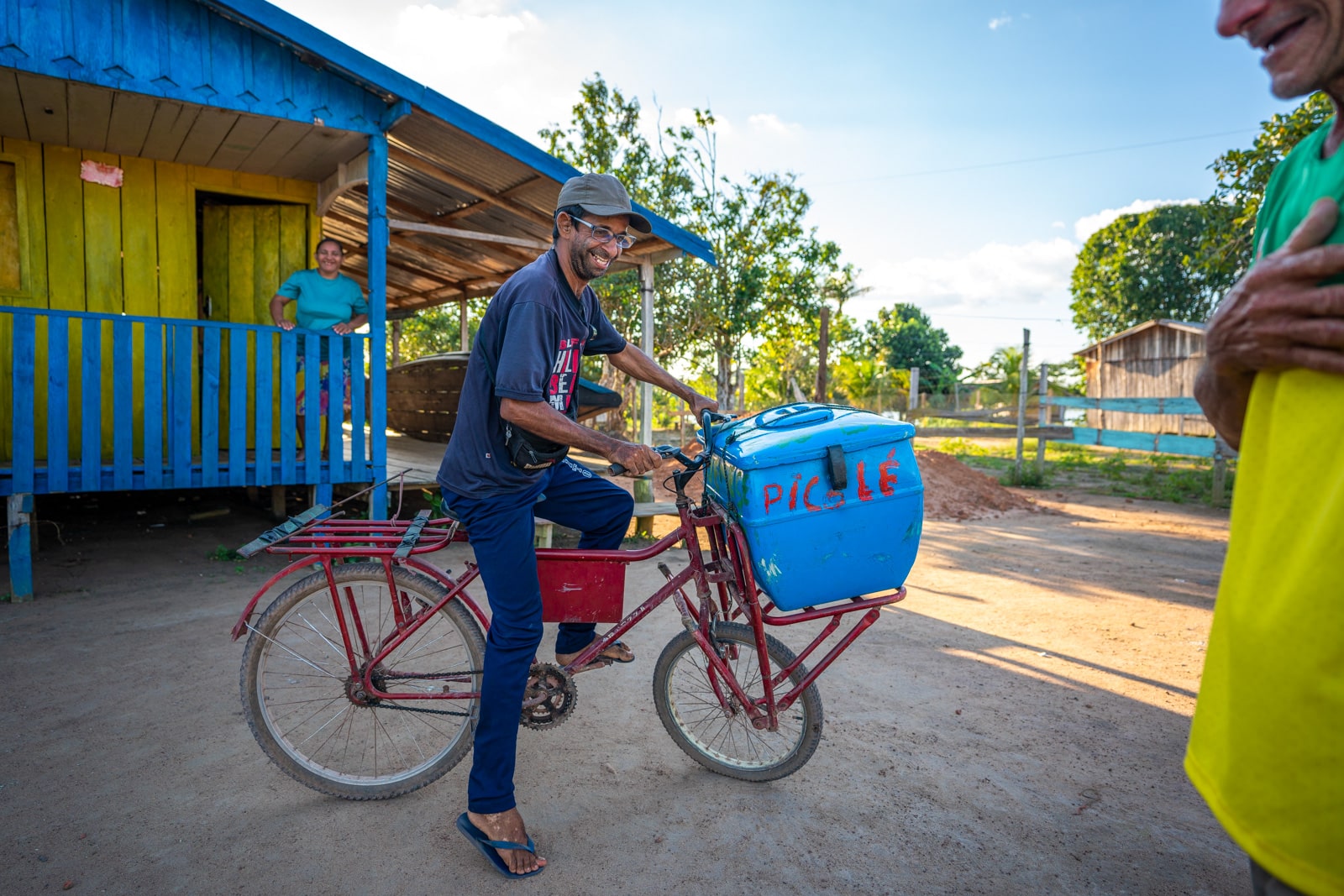
Off he goes!
Later I learned that in the half hour window I was gone, Alex had nearly passed out, and needed to be half-carried by one of our clinic leaders. Despite all that, Alex returned to the clinic the next day; his eyes newly bespectacled, his box once again full of colorful popsicles.

In the Amazon, you’ve gotta do what you’ve gotta do to survive and thrive.
A long road to good sight
During the five days of OneSight’s Amazon clinic, I learned that journeys like Alex’s were common.
These stories weren’t something I expected; I thought the clinic’s purpose was to bring eye care right to people in remote villages. When OneSight told me we were working with two villages in the Brazilian Amazon, I assumed our patients would come from in and around those villages, not people from places hours away.
Yet each day of the clinic, both in Murutinga and Cuia, boats laden with (too many) people appeared from places farther and farther away.

Slowly grasping the journey that some of these people were undertaking, I began asking people where they came from each morning… and how. Some came from three houses down the way. Others came from three hours down the way.
Taking the Mercedes out for a spin splash
Deborah, Dainara, and Jamile (oldest to youngest) left their village, Poncano, at 3:00 in the morning to reach the Murutinga clinic. The boat journey alone took them four hours, never mind the waiting once they arrived. You’d never guess they’d traveled for so far as they animatedly answered my questions from their boat moored to the riverbank.

Jamile, Deborah, and Dainara (left to right) rockin’ the roll shades
Lounging in their peeling wooden boat—named “Mercedes” to my great amusement—they waved away my concern at how far they still had to travel. “It’s not a problem,” Deborah told me nonchalantly, “we have hammocks on the boat.”
Most impressively, the family didn’t even need glasses. They came simply because they know eye care is important, and they didn’t want to pass up the opportunity for a free exam.
Creatures in the dark
Others came with more pressing needs.
Marilucia came on our last clinic day in Murutinga with fourteen others from her village. They left home at 6:00 in the morning to reach the clinic by 10:30; almost all of them needed glasses.
It was a hectic day. The lab team was rushing to finish hundreds of pairs of glasses so we could depart for the next village that evening, but more patients kept flooding in. Some eventually had to be turned away.

Daniele, our clinic manager, rushing to go through prescriptions after sundown
Marilucia, tired, hungry, and anxious about the late hour, watched the sky fade to the soft blue of twilight.
She and her relatives were waiting for their glasses, but they also needed to catch the last public transport home. They were ready to leave without glasses to do so.
While sitting at a tiny wooden school desk, Marilucia told me they needed to take a 10 minute boat ride, a 1.5 hour bus ride (for only 23 kilometers), and walk a final four kilometers. If they caught the bus in the first place.

Marilucia finally got her glasses!
Concerned, I asked her if it was safe for them to walk in the dark, if they could get home if they missed the bus. Walking or finding a ride was possible, and they weren’t concerned about thieves because they were in a group, she said.
Panther attacks were what they had to worry about.
The need is real
Hours of boating, busing, walking. Early morning departures, late night returns. Security worries and health concerns. All of these patients’ stories illustrate need.
Some people traveled because they couldn’t afford to pay for their own glasses in the city… or afford a stay in a city at all. Others simply don’t have regular access to any kind of health care, and must take these kinds of charitable opportunities where and when they come.
Whatever their motive, whatever their means, most patients were needy enough to merit traveling hours for an exam that you and I take for granted. Their journeys show the value of good sight and eye health, and the lengths people will—must—go to attain it.

A local family climbing back on their boat to head home post-clinic
Visions of the future
But the story shouldn’t end here.
There are more than four million people living in Amazonas, Brazil; not all of them are in areas as “accessible” as Murutinga and Cuia.
Some villages are reachable by road, but many others are accessible only by water. It took me more than 36 hours to reach the edges of Amazonas from Manaus on a fast boat—think about how long it would take on the rickety little rabeta boats common in the Amazon, which only travel at 6 km/hour on good days.
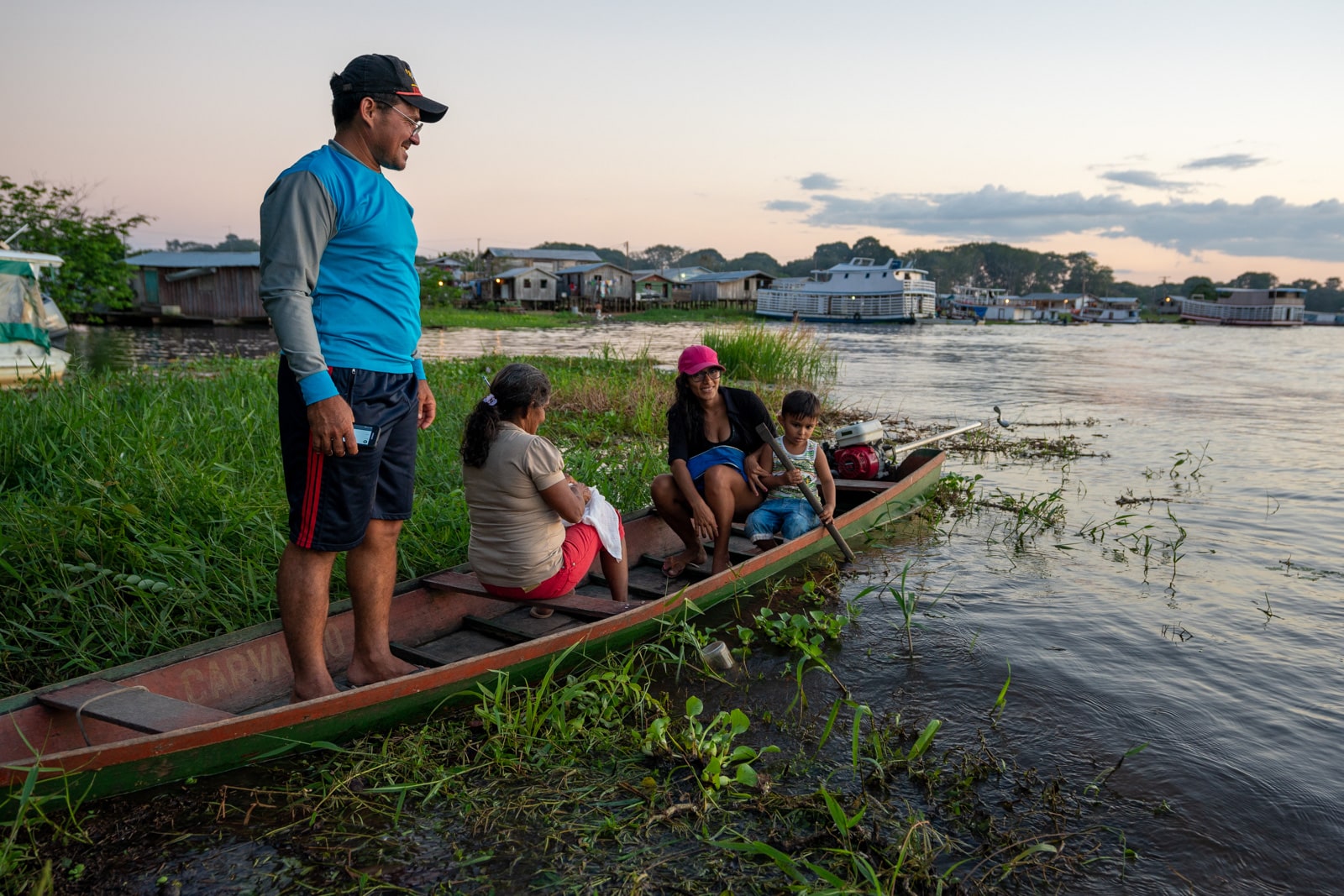
Back in the rabeta they go!
This OneSight clinic was an experiment, a test of the literal and figurative waters of the Amazon to see if a boat-based clinic was plausible… and replicable in more remote or difficult locations.
After five days of trying out mobile eye care and registration technologies, testing satellite and local network communications, and getting feedback from patients and volunteers, it’s safe to say that the clinic was a success. One that OneSight wants to accomplish again, both inside the Amazon and out.

Literally delving into the Amazon. Not pictured here: getting a face full of tree.
How you can help OneSight help more people
Like everything in life, finances are necessary for another clinic of this nature. Though OneSight was born from a large corporation, Luxottica, it separated around one year ago to become its own entity… one that needs to fund itself.
These days, OneSight runs primarily on donations and the help of its volunteers. Many volunteers fundraise to earn their place on clinic trips; this Amazon clinic was no different.
After spending more than a week seeing OneSight in action and learning about their ideas, I can say that I’m 100% behind the organization and the work they do. They are transparent, strive for responsibility, and genuinely care about their work and their patients.
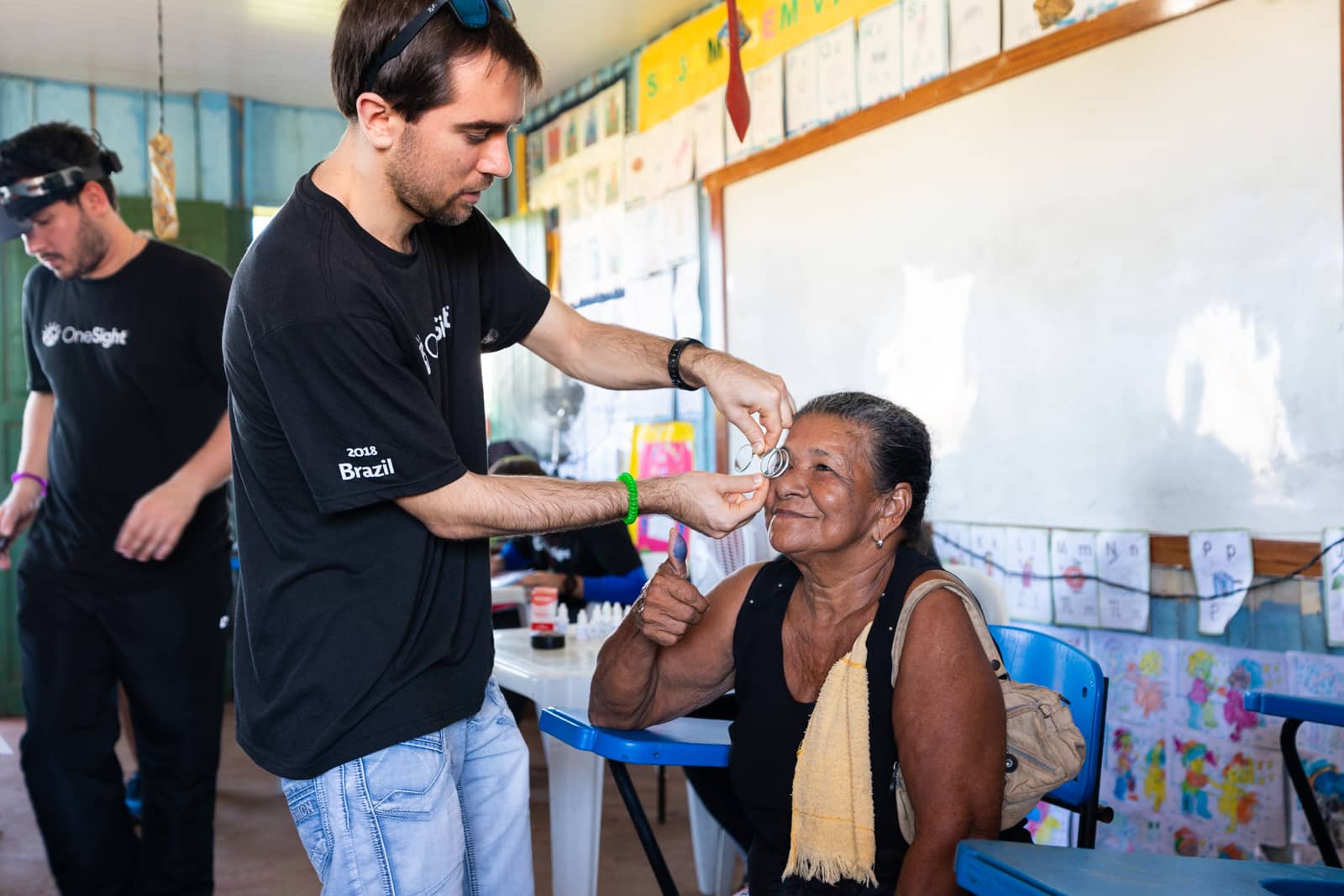
Tom, a OneSight volunteer (and master fundraiser) from Australia helping out the sassy Marta, my favorite patient from the clinic
I’m happy to support their cause, and encourage you to do so, too. I created to fund both this past clinic and any future clinics in the Amazon and beyond. Now that you’ve had a glimpse into just how essential—and inaccessible—eye care can be for some, I urge you to find it in you (and/or your pocket) to donate to OneSight’s cause.
$30 buys someone an eye exam and a pair of glasses that will last years, but any amount is better than nothing. Your donations are the fuel that keeps these clinics running, and, more importantly, bring perfect vision to those who might never see it otherwise.
Trust me when I say: your donations are appreciated.
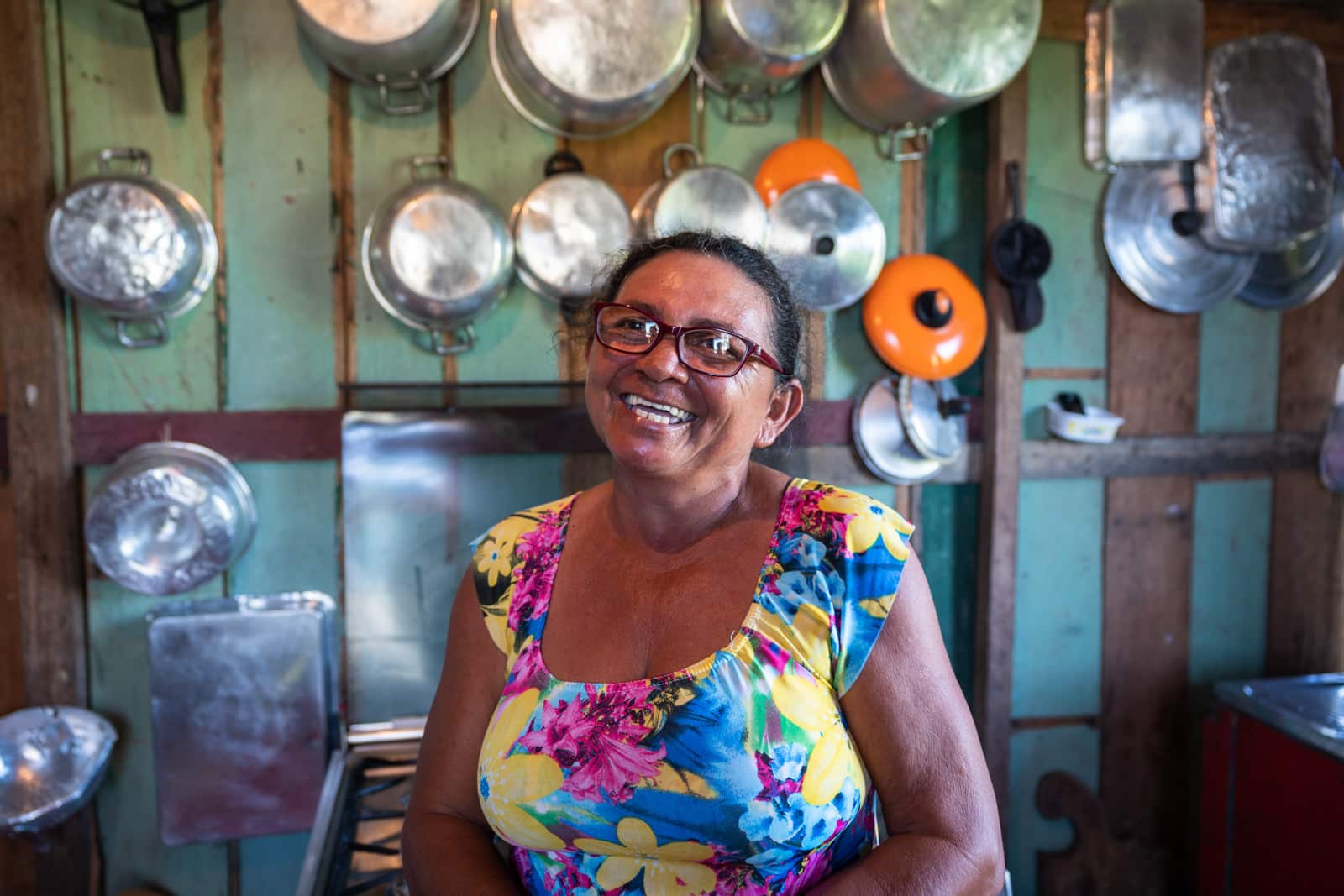
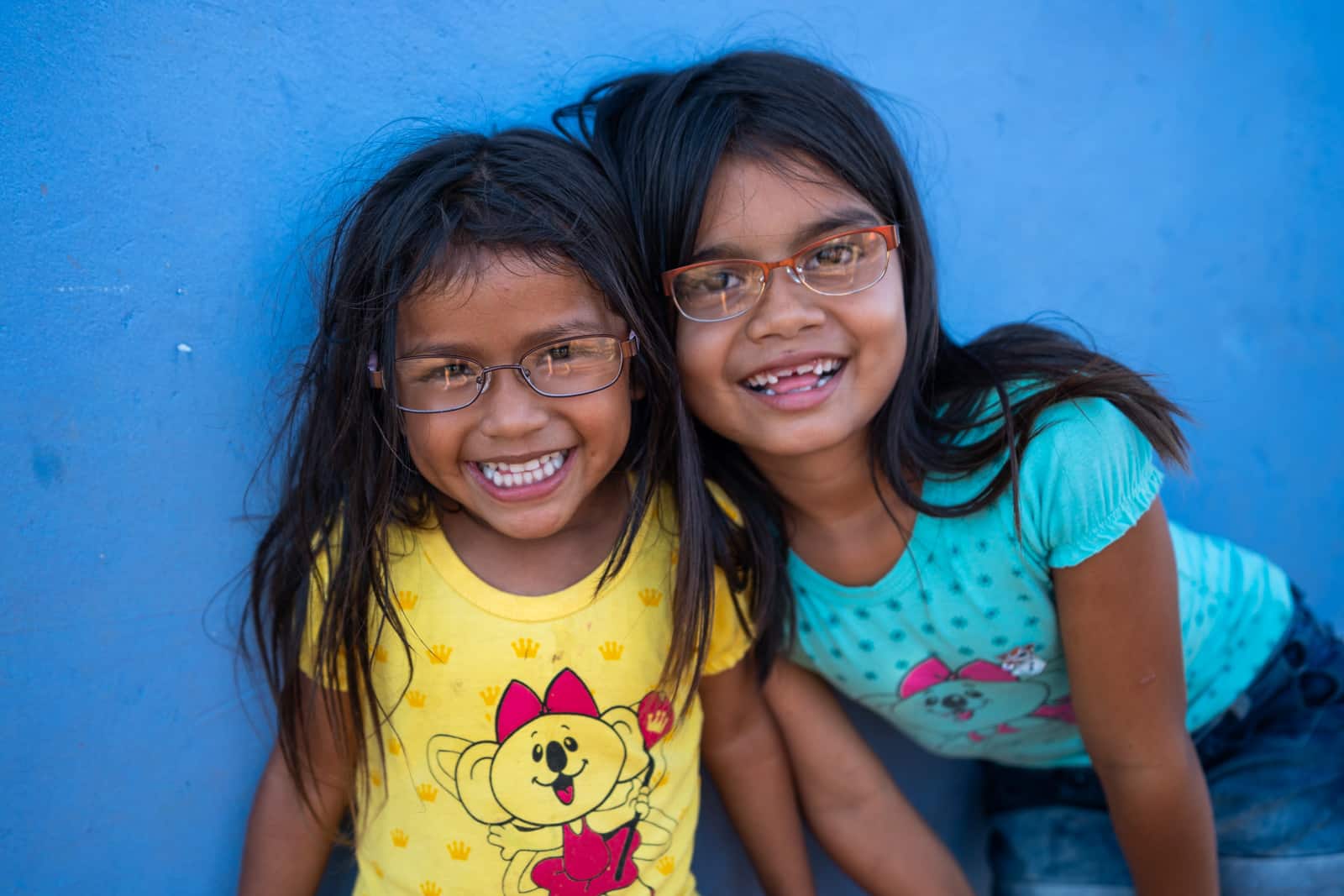



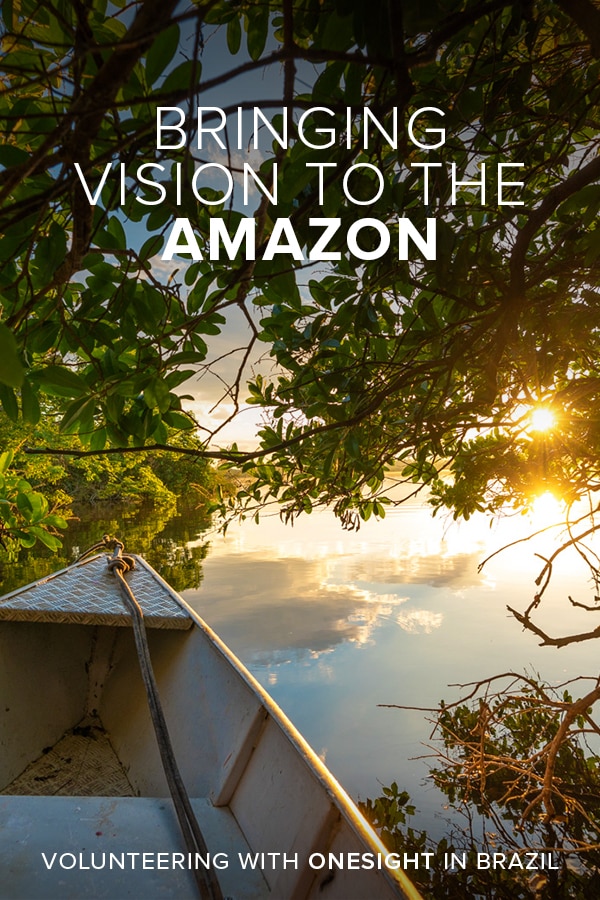
Loved this? Pin it!
Yay transparency! OneSight covered all the expenses of my trip into the Amazon. However, I truly believe they do good work, and I support their cause 100%. Trust me, I would never ask you to donate to a cause I don’t support, nor an organization I don’t believe in.



I’m curious, how did you hook up with OneSight?
The wonders of the internet: OneSight (well, their media agency) found me! Thanks for your donation, by the way.
This is great and really glad to hear about this work. Seems like they could do some other online fundraising. Are they doing that. I am a retired fundraising and I teach fundraising.
Of course they have fundraising campaigns and the like going on all the time, and many volunteers will raise funds themselves with family and friends before going on a clinic.
Such a great post <3 Hope that one day I could have a chance to visit Amazon. It is so amazing. I read and learn about Amazon a lot, from the internet, books to the Discovery Channel. From my point of view, this is the most exciting place in the world. I`m sure that my experience there will be one of the most memorable moments in my life. Thank you